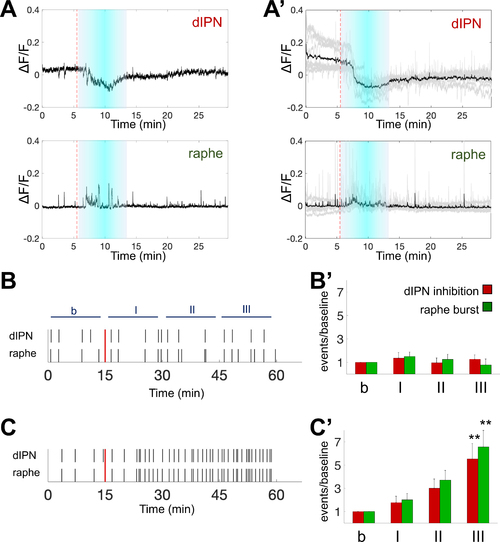Fig. 3
- ID
- ZDB-FIG-221214-14
- Publication
- Zaupa et al., 2021 - Trans-inhibition of axon terminals underlies competition in the habenulo-interpeduncular pathway
- Other Figures
- All Figure Page
- Back to All Figure Page
|
Nicotine induces prolonged negatively correlated event
(A) Representative ΔF/F traces from dHb terminals in Tg(gng8:GAL4ff)c426;Tg(UAS:GCaMP7a) explant. 5 min nicotine (10 μM) perfusion induces inhibition at the dIPN (top) and bursts at the raphe (bottom). (A’) Average ΔF/F traces (black) of nicotine-induced negatively correlated events (grey). Duration (cyan boxes) and initiation (red dotted lines) of nicotine application indicated. n = 8 explants. (B,C) Representative raster plots of dIPN inhibition and raphe burst events. (B) Control and (C) nAChR antagonist (100 μM mecamylamine and 10 μM d-tubocurarine) application. Introduction of E3 solution (B) or antagonists (C) indicated (red lines). (B’,C’) Ratio of average number of events in 15-minute windows (I, II, III) and baseline activity (b) after applying (B’) E3 (n = 4) or (C’) antagonists (n = 6). Bars indicate negatively correlated events in dHb terminals at the raphe (green, bursts) and dIPN (red, inhibition). One-way ANOVA followed by Tukey’s test, ** p<0.005. b: 15 minutes of baseline, I: 0–15, II: 15–30, III: 30–45 min after application. |

